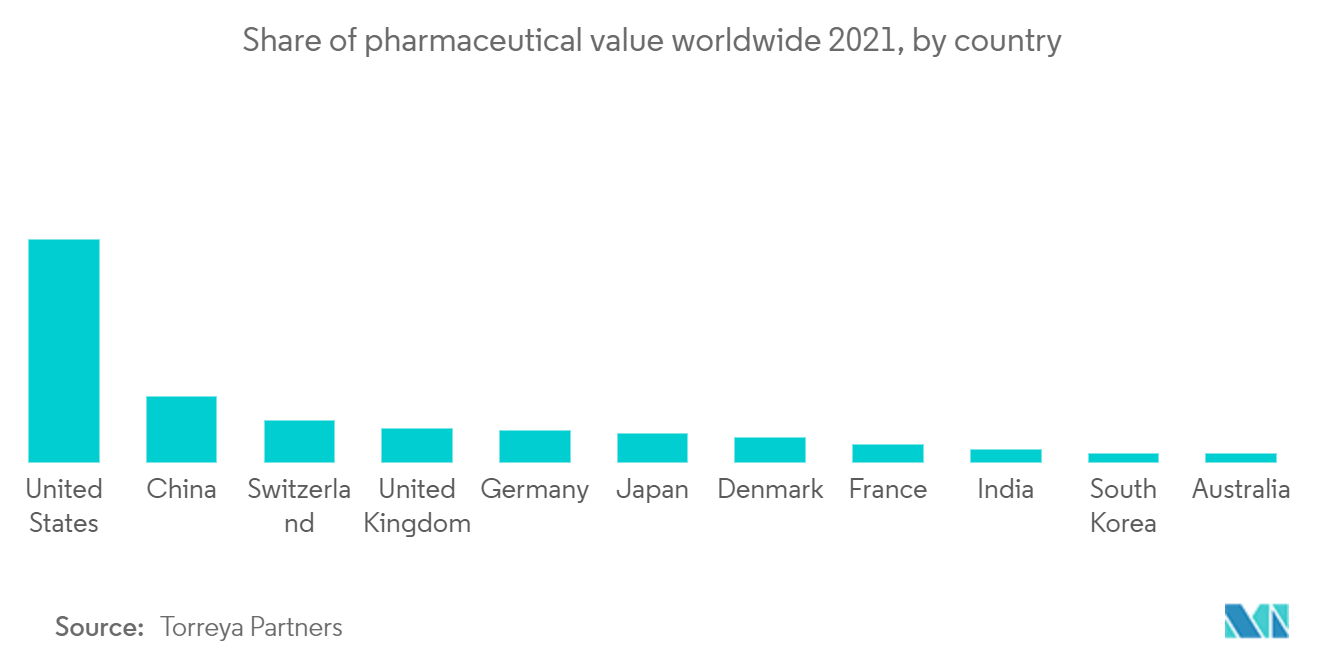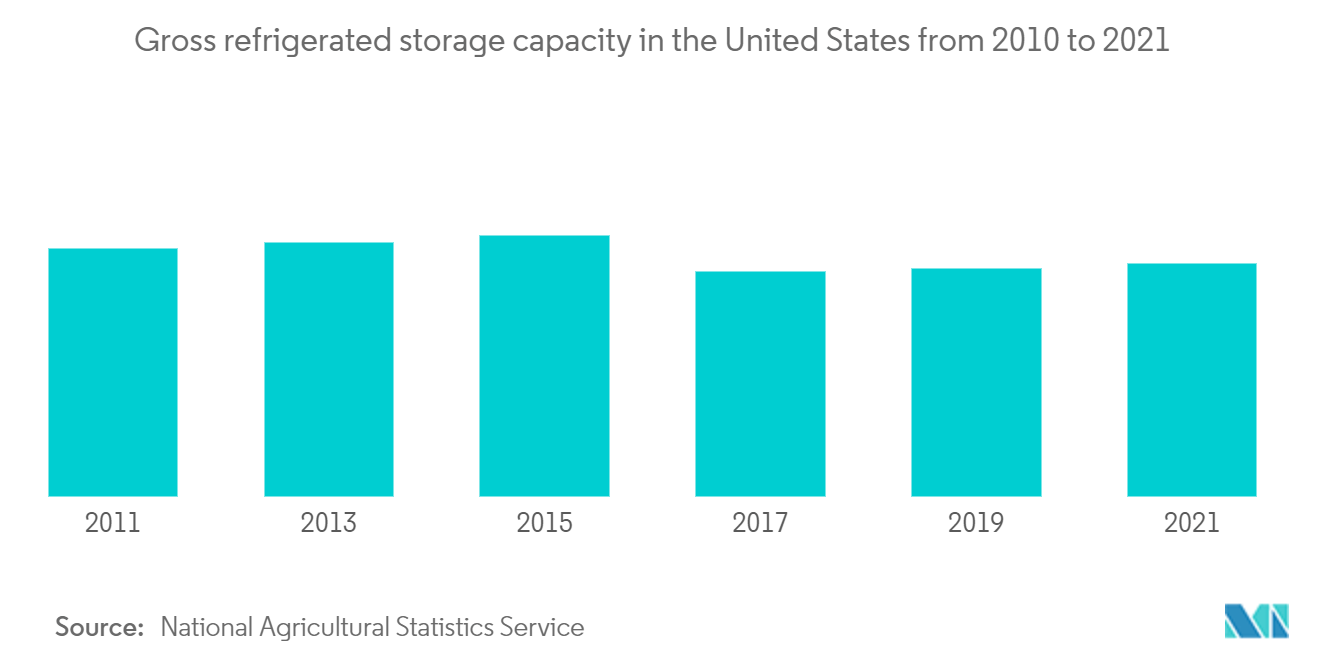Market Trends of United States Pharmaceutical Logistics Industry
Growing Pharmaceutical Industry in the Country
The United States is the world's leader in pharmaceutical R&D. As of November 2021, the United States' share of the total global pharmaceutical value stood at 40 percent of the pharmaceutical industry worldwide, while China's share stood at 12 percent.
The US government's plan to implement cost control policies, along with the tightening of government rules like the delay in the approval of complex generics and price erosion in the United States generic pharmaceutical market, is expected to impact the growth prospects of the United States pharmaceutical industry.

Growing Cold Storage in the United States
Most of the time, the United States is seen as one of the most important markets for developing solutions for managing cold storage processes well.As a result, the market is likely to provide chances for growth in the pharmaceutical sector. Keeping track of pharmaceutical items like vaccines and medications is an expensive process that needs to be done with the right security measures in place to protect the quality of the products.
In 2022, the production stores sector had the biggest share and was expected to grow at the fastest rate, with a CAGR of more than 15.6%. According to the Global Cold Chain Alliance, public storage capacity in the United States accounts for around 75% of total cold storage capacity. Public warehouses help merchants and producers store perishable goods cheaply and make it easier for them to get their goods to customers. The state's 400 million cubic feet of cold storage space, which serves a large customer base, accounts for a sizable portion. Florida, Washington, and Texas are among the industry's leading states, with a considerable market share in 2022. North Carolina and South Carolina are two of the fastest-growing markets, with CAGRs of more than 15.2% and 14.7%, respectively.



